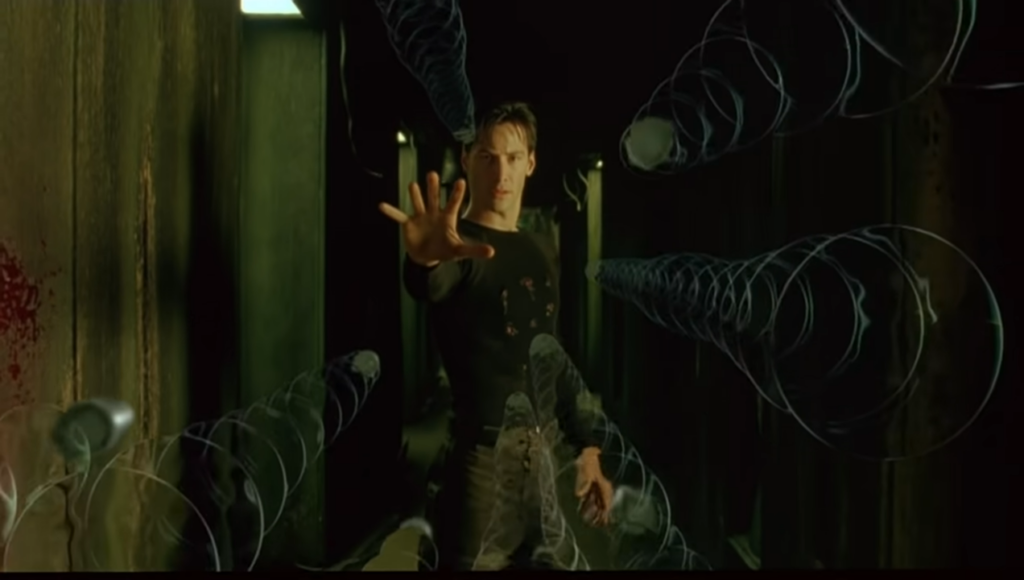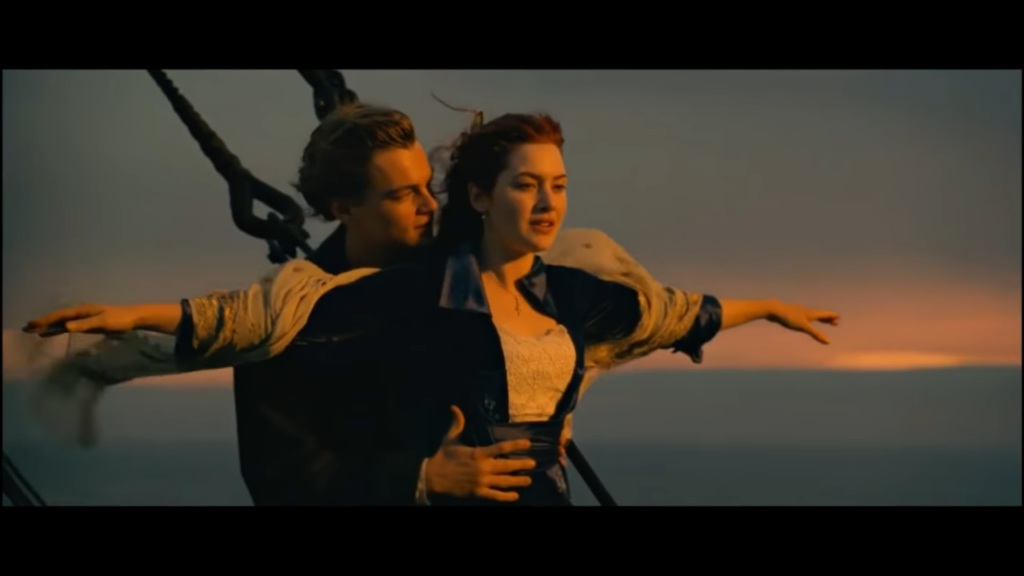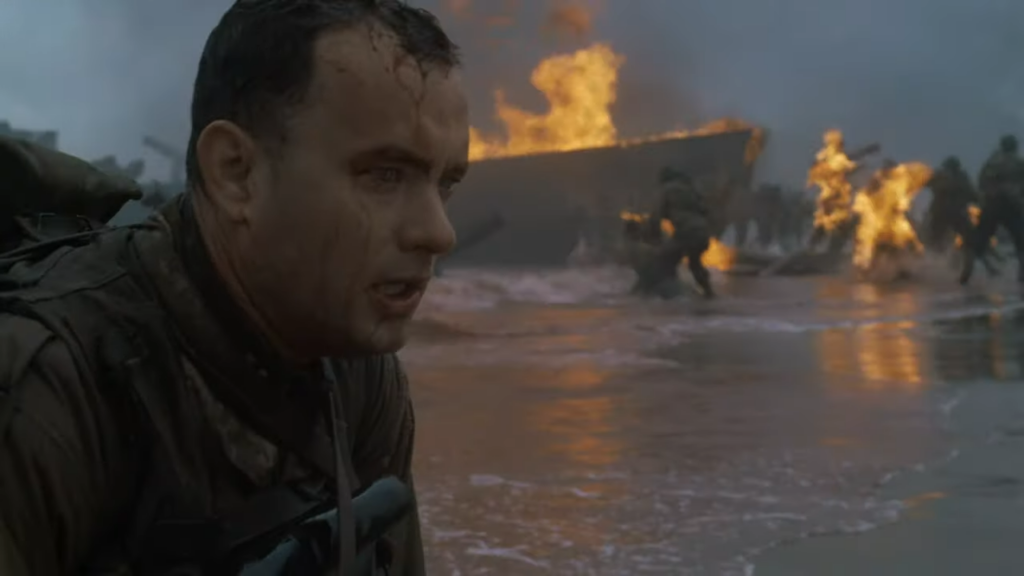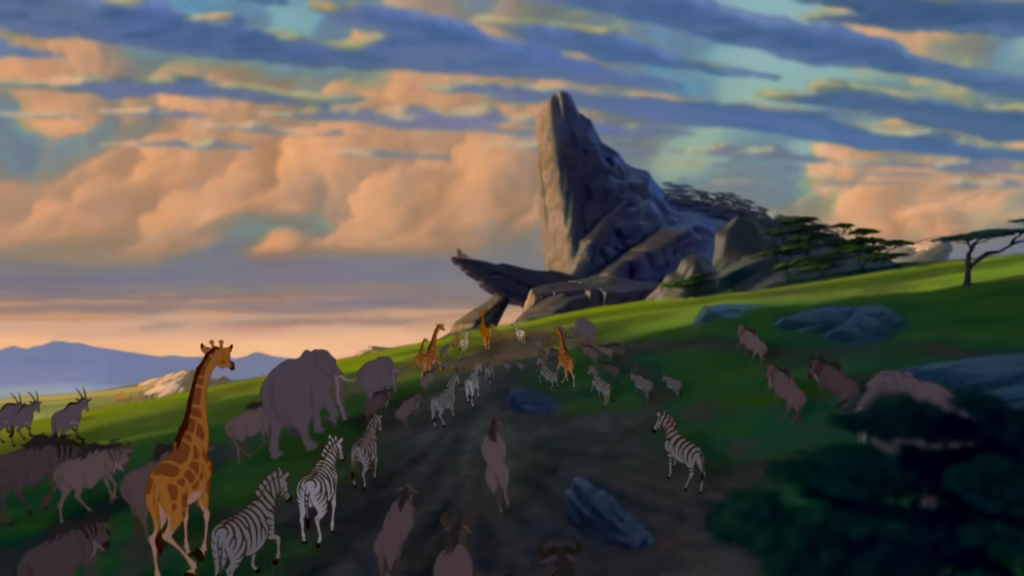Oh, the 90s. What an exciting time. It featured a flurry of introductions, a new age seemed to be draping itself upon the Western world. The Cold War, at last, was finally over. The Iron Curtain and vein robotocism of the Soviets had been eradicated, the very essence of human nature had been seemingly confirmed in the endurance of democracy and individual self-determination. Optimism was king, innovation would curtail every peril. The Internet had developed from its infancy, disseminating information at an unparalleled rate, Gutenberg 2.0. The middle class was expanding, the federal budget had been balanced, we had extricated ourselves from political brinkmanship. What a contrast to what we would become.
Every era , nevertheless, is defined by an assortment of cultural items, including movies. Films, in whatever constitution or platform they manifest, continue to hold our increasingly blinkered attention spans. They offer a semantic and imagistic reproduction of our own travails, a temporal space for us to evaluate the malleability and adaptive proclivities of our own attained characteristics, in another character’s reflection. That is why the endure, why they can evolve into a mythos of their own.
Here are 5 of the best movies of the 1990s, which continue to reverberate contemporarily. No objective metrics were used as an assessment tool in deriving this list, it’s merely a reflection of the films I most subjectively associate with the decade.
The Matrix (1999) – Best Movies of the 1990s

Photo courtesy of YouTube, Neo – ‘The One’
The Matrix, released in 1999 by the Wachowski brothers, remains a science-fiction classic. The original Matrix truly sparked a revolution in how science fiction was framed. With impressive special effects, an eclectic soundtrack, and a narrative seemingly engorging itself upon different plotlines; the viewing audience was left mesmerized, still attempting to digest the influx of mind-bending content on display.
The Matrix, for all its complexity, really revolves around one broad existential question: What if everything we perceive, everything we know, all the adaptive behaviors we’ve incorporated in response to the forward locomotion of life, wasn’t real? What if everything we thought we knew, wasn’t anything at all? What if, furthermore, it wasn’t simply unreality, it was instead a digital simulation used as an agent of subjugation and submission by another entity? That we were, in essence, acting out behavioral roles in a metanarrative not of our own imagination? Perplexing, to say the least. Not casual popcorn cinema.
Thomas A. Anderson, the protagonist, is first introduced to us as a computer programmer existing in a somewhat tenuous emotional state. In his alternate, subterranean capacity as a computer hacker, he is known as “Neo.” During his amblings as a hacker, Neo stumbles across vague references to something referred to as “The Matrix.” The precise meaning of this term, it’s nature, eludes Neo. For elucidation, he seeks the enigmatic figure of Morpheus, who offers an antidote to Neo’s existential angst in the form of a red pill. Neo, somewhat hesitantly, complies.
Immediately, Neo wakes up in an embryonic state, no longer plugged into the artificial reality that had been constructed for him, but reality itself. Unprogrammed, unrestricted, uncontained reality. He is quickly jettisoned to Morpheus’ ship, discreetly navigating the tunnels of planet Earth, eluding the robotic “sentinels” bent on their elimination. From there, the veil is drawn back, as Neo learns of the true plight of humanity, which has been ruthlessly exploited as an energy source for the diaspora of artificially-intelligent machines that now inhabit the planet. The Matrix, Neo learns, was designed as an apparatus to enslave humanity, offering a digital framework for docile servitude.
Neo similarly learns he possess a unique capacity to alter the Matrix at will, to instantiate the revision of extant codes, and is subsequently prophesied as a potential liberative force for humankind. The remainder of the film relates Neo’s journey as he comes to accept his role as the “anointed one,” the “chosen one,’ or most simplistically, “the one.” It is worthy of a watch.
From the perspective of 2023, it is impossible not to view the concept of “The Matrix” as almost an extended metaphor for our own lives in the digital age. Humans have always been automatons to a degree, but how much more are we so now, in an age where innovation is concordant with shrinking ourselves to the proximity of a smartphone screen? How much of our humanity have we consequently lost, in exchange for machine-enhanced convenience and immediate gratification?
Those questions, and many more, are why the Matrix is such a fascinating, and indeed, entertaining film. Truly one of the masterpieces of the 1990s.
Titanic (1997) – Best Movies of the 1990s

Photo courtesy of YouTube, Titanic – “I’m Flying” Scene
All these years later, we still remain fascinated with the doom of the Titanic. The “Unsinkable Ship,” ignominiously sunk on its first voyage across the Atlantic. The eternal clash of nature and civilization, wrought before our eyes in abstracted form. The hubris of man in counterpoise against the chaos of nature.
James Cameron’s “Titanic” is one of the highest-grossing films of all-time. I still remember, as a youngster, the ubiquity of this film, its ineluctable presence, and its protracted stay in theaters. It is, quite unthinkably, a romance. But a romance that, like the Titanic, was not fated in the stars. Rose, the protagonist, is the offspring of a wealthy family, now bereft of the wealth that hallowed its name in American industry. She’s engaged to a scrutable charlatan, with a violent temper, keen on apprehending her quite violently at times. Rose’s desired end, in contrast to her bleak present, is outright liberation from the stultifying circumstances she has discovered herself in.
Jack Dawson, Rose’s counterpoint and future love-interest, enters her life via a casual conversation on the deck of the Titanic. He is free-wheeling, hampered by no obligations, content with the air in his lungs and a drawing canvass before him. The two make a fast connection, despite, or perhaps because of, their stark contrasts in character qualities and outlook. It sounds whimsical, but their fancy blooms into a torrid love affair that upends their lives, almost overnight.
After Jack and Rose have escaped from the familial beckonings encapsulated by Rose’s family, they discover themselves, once again, on the deck of the Titanic, displaying their romantic inclinations. Out of the mists appears the waiting iceberg, which the Titanic crudely bludgeons while attempting to evade impact. We know the rest – The Titanic, a masterwork of iron, drowns fantastically in the mid-Atlantic, killing 1,517 people, mostly drawn from the lower quarters of society. Rose lives, while Jack perishes, infamously promising to “never let go,” before anti-climatically letting go.
The doomed love of Jack and Rose, coupled with the sinking of a massive luxury-liner, created an epic of lasting duration. It’s almost a Shakespearean tragedy. Young love, prematurely embraced, followed by swift dissolution in the icy quagmire of the Atlantic. What should have been permanent, what should have been “unsinkable,” completely obliterated by its first trespass against the unknown.
Saving Private Ryan (1998) – Best Movies of the 1990s

Photo courtesy of YouTube, Saving Private Ryan 4K UHD – Omaha Beach D-Day Landing
“Saving Private Ryan,” directed by Steven Spielberg, is one of the penultimate films of the war, and more particularly WWII, genre. In it, a Midwestern family loses three sons during the war, all within a few months of each other. The lone son remaining, Private Ryan, is identified as a priority to return home safely, to the protective arms of his mother.
“Miller’s Men” are the platoon selected to locate Private Ryan, somewhere in the diaspora of occupied-France. The first obstacle standing in their way: The epic assault on the German position in Normandy, France, D-Day. The scale, violence, and visceral emotion captured in this sequence is poetry of the most affecting kind, portraying as it does the sheer desolation and destruction of modern industrialized warfare. The intricate translation of D-Day to the screen, astonishingly, consisted of only seven pages in the original script. It translated to 25-minutes of screentime. For context, it is typical for one page of script in a movie to account for only 1 minute of screentime. The sporadic, unplanned nature of the filmmaking of D-Day actually contributed, in Spielberg’s estimation, to the gross reality of the battle that they were eventually able to convey.
The survivors of D-Day, then, intrepidly wander through the interior of France, desperately searching for Private Ryan; which for them, is the transaction required for their own safe return home. Along the way, numerous vignettes are presented featuring the small cataclysms of combat, as well as the moral quandaries that become fundamental in the crucible of war. One scene depicts the collateral damage of a small French town, with a young French family displaced in their own home. Another includes an encounter with a German prisoner-of-war, who several of Miller’s men wish to dispose of, while others insist they offer him mercy. The strange calculus of war is everywhere made manifest.
Ultimately, the band discovers Private Ryan defending a pivotal crossing in France. Private Ryan, obdurate and stubborn, refuses to leave his own regiment so he can abscond home with his life. Reluctantly, Miller and his men elect to assist Private Ryan in defending the bridge, which they ultimately succeed in doing, despite their own elimination. Private Ryan survives.
The movie concludes on a solemn note. Private Ryan, now aged and weather-worn, surrounded by his extended family, visits a veteran’s cemetery where Captain Miller is buried. Grief lines his face, pouring from his pores. And, grief, whatever else it is, is not an ephemeral emotion, but a perennial one, one that hits in violent spasms after long periods of dormancy. Private Ryan delivers a brief monologue, sheds several tears, reaches for his wife, and pleads with her to tell him “You’re a good man,” worthy of the sacrifice that was made for him.
The Lion King (1994) – Best Movies of the 1990s

Photo courtesy of YouTube, Official Video from “The Lion King”
The Lion King is a story conspicuously invested in exploring archetypes. Simba, a young lion prince, is born to Serabi and Mufasa, in a majestic opening scene celebrating the cyclical nature of life. Rafiki, the sage baboon, anoints Simba and exuberantly hoists him into the air, displaying the bemused Simba before the Pridelands. The crowded assemblage of animals respond with enthusiasm and joy. New life, an assurance of stability, a recognition of both tradition and adaptation.
Simba grows into an adventurous young cub, daydreaming fervently about his future ascendance to the throne. Temperance manifests in the figure of his father, Mufasa. Voiced with gravitas by James Earl Jones, Mufasa is a philosopher king, an incarnation of sagacity, acculturating Simba to the vicissitudes of his future kingdom. In sharp contrast to Mufasa is his brother Scar, Simba’s uncle. Scar is contemptuous of Mufasa, envious of his throne. He lords over an elephant graveyard, inhabited by voracious hyenas, an area where Simba is forbidden to venture. For Simba, Scar’s principality is the domain of the unknown, representative of uncertainty, a threshold he will eventually have to cross.
And the unknown does emerge with violent force, when Scar plots a coup and murders Mufasa, the beloved paternal figure signifying culture. Simba escapes the Pridelands, a lost prince thought to have perished, and Scar becomes King. Simba wanders wayward, an adolescent ambulating the world in the absence of a guiding force. He falls into the frivolous hands of Timone and Pumba, a meerkat and warthog, who shepherd Simba into a lifestyle revolving around “Hakuna Matata,” or “no worries.” Meanwhile, the Pridelands fall into desolation and chaos under Scar’s tyrannical rule.
Simba struggles, albeit unknowingly, in a state of suspended childhood as an exile in the Edenic oasis he stumbled upon. He shelters himself from responsibility until a chance encounter with his childhood cherub, the lionness Nala. She reminds Simba, quite persistently, of who he is. Who he must become. Simba elects to return to Pride Rock, to combat his uncle in spectacular fashion, reclaiming his birthright and confirming his identity.
It’s a picture-perfect narrative, one of Disney’s greatest animated films. Even though the film is titularly about animals, it is essentially a story of maturation, of the hero’s journey, of decay and revivification — A circle of life.
Forrest Gump (1994) – Best Movies of the 1990s

Photo courtesy of YouTube, Forrest Gump (1994) – Ending Scene
Forrest Gump, starring Tom Hanks and directed by Robert Zemeckis, touched the hearts of moviegoers everywhere. It is the story of a “simple” man living life according to a set of axiomatic principles and pithy aphorisms. Below are several:
“Stupid is as stupid does.”
“Run, Forrest, run!”
“Life is like a box of chocolates…You never know what you’re going to get.”
“Me and Jenny go together like peas and carrots.”
“That’s all I have to say about that.”
“I don’t know if we have a destiny, or if we’re all floating around accidental-like on a breeze…But, I think, maybe it’s both.”
I do wonder how they pitched the story of Forrest Gump as a film. While there are extraordinary moments percolating throughout the film, the story itself is about an obdurate creature of habit. Forrest is from Greenbow, Alabama, a rural town of little notoriety. As a child, Forrest is regarded as dim, ill-suited for the rigors of academia. Born with a plodding mind, a languorous Southern accent, and diminutive ambition, Forrest does not seem destined for a spectacular, distinctive life.
Forrest, however, does possess one conspicuous physical gift: He’s a preternatural runner. He sprints with sharp velocity, linearly, not peering to the left or right, just demonstratively forward.
And, boy, does Forrest run. As a kick returner for the University of Alabama, he runs. He runs, without any proper consideration, headlong into the Vietnam War. He runs toward becoming a ping-pong champion. He then later runs, on fumes, for three-and-a-half years, criss-crossing the United States despairing the departure of his romantic interest, Jenny. According to Forrest, his running was for “no particular reason.” In the process of running, he inspires millions, as the story of Forrest’s meanderings permeate the news in every locale he visits. Though the act of running itself means nothing to Forrest; for others, it becomes an almost transcendental act. Ironic, huh?
The story concludes with several punctation points. Forrest receives information regarding Jenny’s whereabouts. He visits her, discovers her son, which is his own; and learns of his paternal obligations. Forrest and Jenny return to Greenbow, Alabama, and get married. They are happy for a truncated amount of time, until Jenny falls fatally ill, and eventually perishes. Forrest is left with his estate in Greenbow, and his son. The movie concludes with Forrest, seated upon a quaint bench, and a feather drifting, caught in a mellifluous breeze.
The act of description doesn’t do justice to the beauty of Zemeckis’ film. It’s such a rudimentary story, but the power of the narrative is in its simplicity. Forrest, with all his peculiar tendencies and idiosyncrasies, navigates life in an intensely fulfilling way. He has no ambitions, yet ambition finds him. He’s not seeking to impress anyone, but he nonetheless manages to inspire an entire population of people without any veritable mooring. He bears a child. He becomes a war hero. A ping-pong champion. Forrest may have been drifting through life, but what a perspicacious gust of wind it was.

